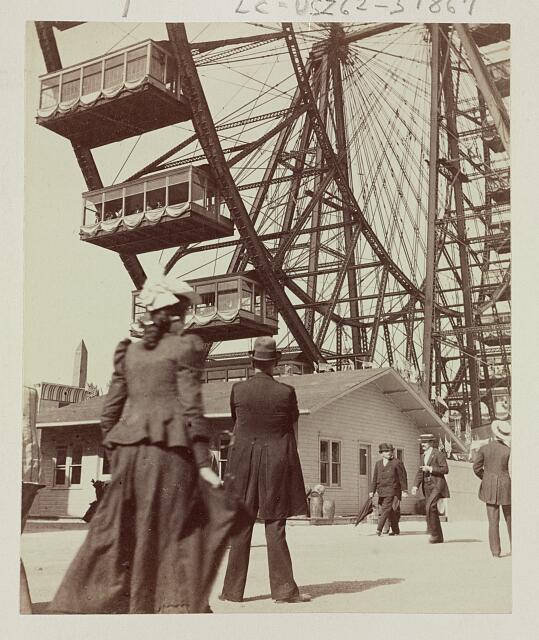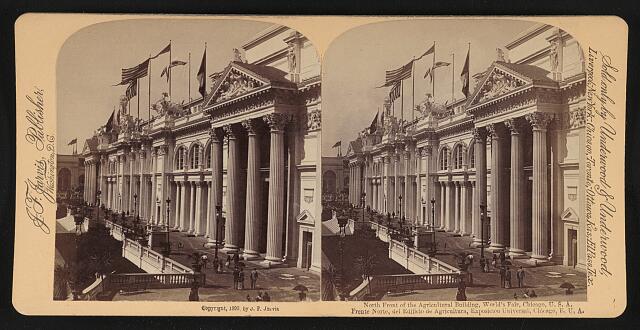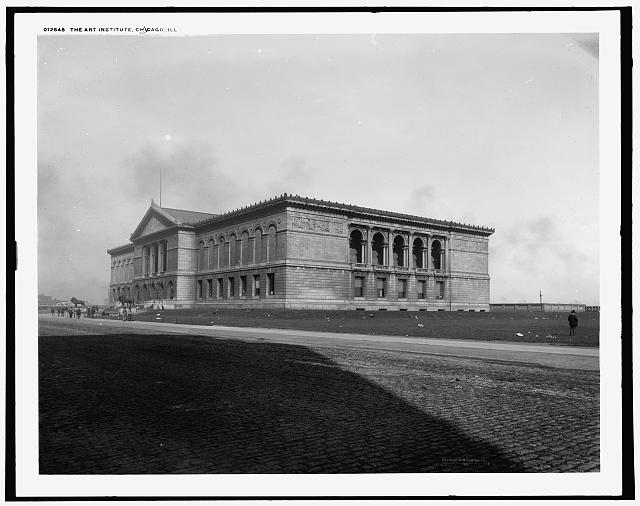Published: May 22, 2023
Commemorating 130 years since the Chicago World's Fair
This May marks the 130th anniversary of the World’s Columbian Exposition, or Chicago World’s Fair. Planning began in 1890, with four major American cities placing a bid to host the event. Members of the House of Representatives judged the cities on criteria such as safety, transportation, accommodation, and funding. After several rounds of debate and voting, Chicago was the city that won. In the final vote, Chicago received 157; New York, 107; St. Louis, 26; and Washington, DC, 18. (21 Cong. Rec. (Bound) – House: February 24, 1890)
In the 19th and early 20th centuries, world’s fairs attracted millions of people to marvel at the technological progress of the time.  Competition between host cities was fierce and spurred innovation in architecture, art, and culture. 130 years ago, on May 1, 1893, the Chicago World's Fair opened, to commemorate the 400th year of progress since Christopher Columbus' arrival. By the end of October 1893, roughly one-third of the U.S. population visited the fair. (National Archives and Records Administration )
Competition between host cities was fierce and spurred innovation in architecture, art, and culture. 130 years ago, on May 1, 1893, the Chicago World's Fair opened, to commemorate the 400th year of progress since Christopher Columbus' arrival. By the end of October 1893, roughly one-third of the U.S. population visited the fair. (National Archives and Records Administration )
To prepare for the event, the city of Chicago constructed 200 new buildings, which generated a renewed interest in neoclassical buildings and influenced architectural trends nationwide. General Electric supplied electrical bulbs, which illuminated the buildings at night, and Chicago earned the new moniker—The White City. The fair housed the world's first Ferris wheel, a response to France's Eiffel Tower from the previous world’s fair. (Library of Congress )
A few examples of buildings at the fair:
- The Agricultural Building had a variety of attractions, including apiarian exhibits, which displayed "tons of honey," honeycombs, beekeeping tools, and even active colonies, as an homage to the theme of America being "the land of milk and honey" as described in House Document No. 510 from the 57th Congress, World's Columbian Exposition, Chicago, ILL., 1893, Report of the Committee on Awards of the World's Columbian Commission, Vol. II.
- The World's Congress Auxiliary Building stands today as the Art Institute of Chicago, and it is one of the two remaining buildings from the fair. The Parliament of the World's Religions first convened to hold interfaith conversations and interactions at the fair, as explained in this bill introduced during the 117th Congress referencing the history of the organization, H. RES. 1490 - Expressing support for the Parliament of the World’s Religions. The Women's Branch of the Auxiliary and the Board of Lady Managers invited speakers from around the world. Some examples of the lectures include: "The Intellectual Progress of the Colored Women of the United States Since the Emancipation Proclamation," by Fannie B. Williams; "The Organized Efforts of the Colored Women of the South to Improve their Condition," by Sarah J. Early; "Organization Among Women as an Instrument in Promoting the Interests of Political Liberty," by Susan B. Anthony; and "The Moral Initiative as Related to Woman," by Julia W. Howe. (National Park Service ; National Archives And Records Administration )
- The Palace of Fine Arts, known today as the Museum of Science and Industry, is the other building that still stands today.
North front of the Agricultural Building, World's Fair, Chicago, U.S.A. Source: Library of Congress
The Art Institute, Chicago, Ill. Source: NARA
Fine Arts Building, Chicago, Ill. Source: Library of Congress
Unfortunately, the fair also featured racist depictions of non-Western cultures and people of color. Civil rights activist Ida B. Wells co-authored a pamphlet with Frederick Douglass: "The Reason Why the Colored American is not Represented in the World's Columbian Exhibition" and distributed it in protest at the fair. As a result, Black women formed the Women's Branch of the Auxiliary and invited women of color to speak at the World's Congress Auxiliary Building. (National Archives and Records Administration )
Today, the Department of State's Expo Unit in the Office of the Under Secretary for Public Diplomacy and Public Affairs, is responsible for U.S. participation in the Bureau of International Expositions (BIE) and international exhibitions. The next opportunity for the U.S. to host a world's fair will be in 2027/2028 or 2030. (Department of State ) The 2025 exposition will take place in Osaka, Japan. (Department of State )
Related Publications
- H. Doc. 57-510 - World's Columbian Exposition Chicago, Ill., 1893. Report of the Committee on Awards of the World's Columbian Commission. Special reports upon special subjects or groups. In two volumes. Vol. II.
- Proposed 156 Cong. Rec. S2479 - Senate Resolution 494 - Honoring Ida B. Wells for Her Activism in the Civil Rights Movement and Women's Rights Movements and For Her Influential and Inspirational Leadership.
- Browse through search results over documents from the 1882 and 1883 Bound Congressional Record and Serial Set collections regarding the debate surrounding the argument for and against closing the Chicago World's Fair on Sundays.
Other Resources
- To learn more about the exhibits and exhibitors, and other general information about the fair visit the Library of Congress.
- Chronicling America’s guide to the Chicago World's Fair.
- To search the Library of Congress’ Prints and Photographs Online Catalog and view pictures of the fair, use keywords Chicago World's Fair or World's Columbian Exposition.
- Search GPO’s the Catalog of U.S. Government Publications (CGP) to find more publications related to fair. The CGP is the finding tool for federal publications that includes descriptive information for historical and current publications as well as direct links to the full document, when available.
About Featured Content Articles - This series of articles aims to highlight content available in GovInfo related to various national observances, commemorations, anniversaries and more. See more featured content articles.


